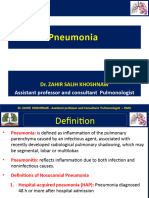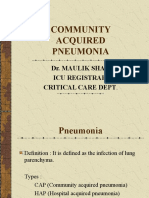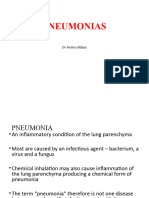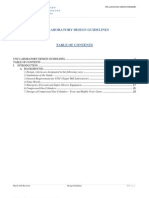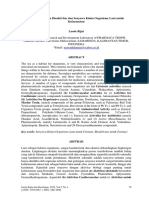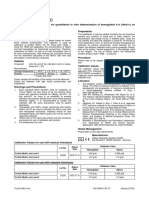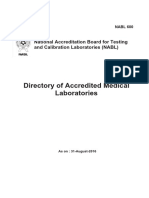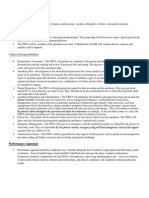0% found this document useful (0 votes)
15 views4 pagesPneumonia Study Guide
Pneumonia is an infection of the alveoli and lung parenchyma caused by various microorganisms, classified by setting, organism, and radiological pattern. Key clinical features include fever, cough, and dyspnea, with management involving antibiotics and supportive care based on severity assessed by the CURB-65 score. Prevention strategies include vaccinations for pneumococcal, influenza, and COVID-19.
Uploaded by
S Seigh0282Copyright
© © All Rights Reserved
We take content rights seriously. If you suspect this is your content, claim it here.
Available Formats
Download as PDF, TXT or read online on Scribd
0% found this document useful (0 votes)
15 views4 pagesPneumonia Study Guide
Pneumonia is an infection of the alveoli and lung parenchyma caused by various microorganisms, classified by setting, organism, and radiological pattern. Key clinical features include fever, cough, and dyspnea, with management involving antibiotics and supportive care based on severity assessed by the CURB-65 score. Prevention strategies include vaccinations for pneumococcal, influenza, and COVID-19.
Uploaded by
S Seigh0282Copyright
© © All Rights Reserved
We take content rights seriously. If you suspect this is your content, claim it here.
Available Formats
Download as PDF, TXT or read online on Scribd
/ 4













